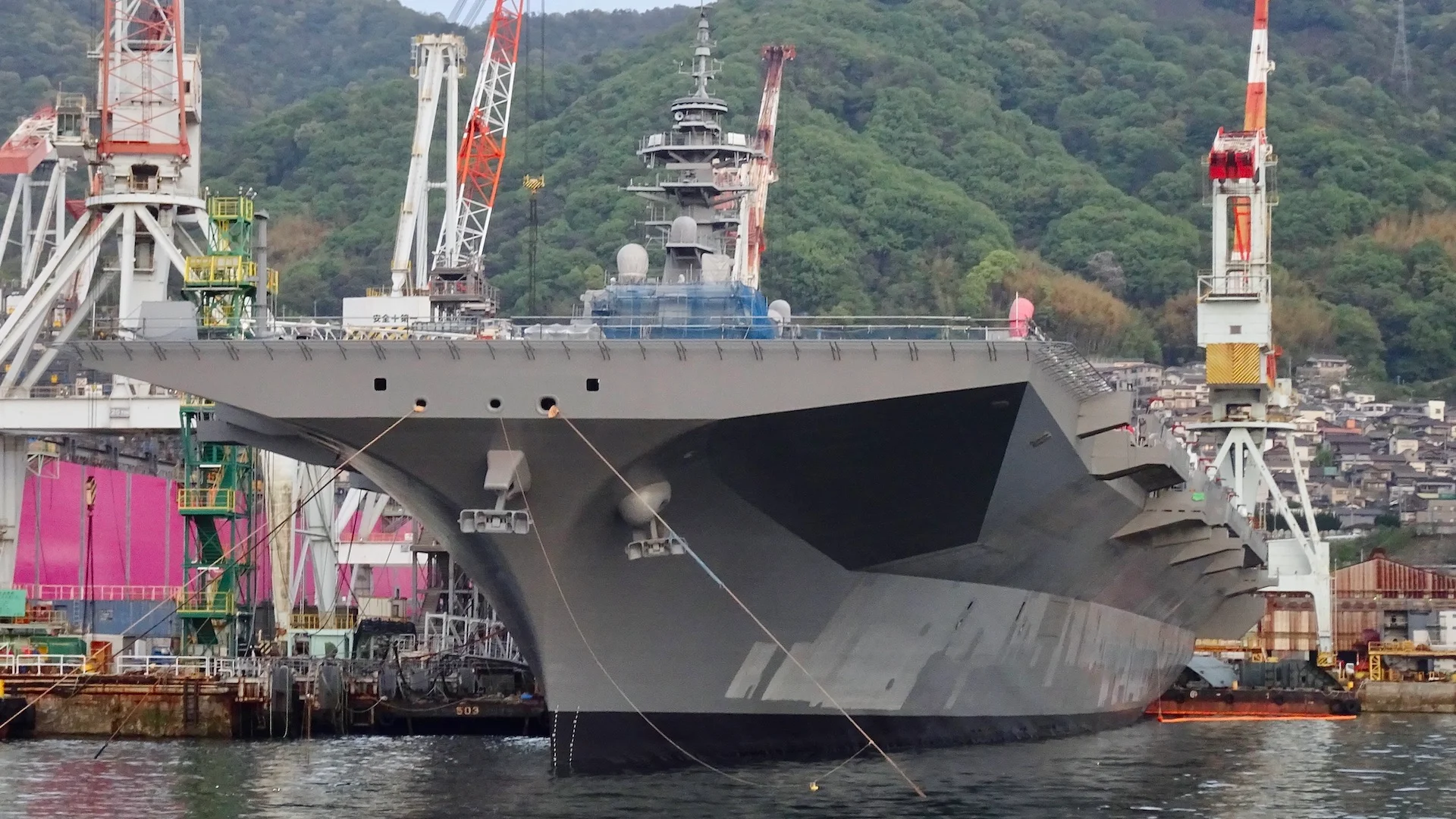
In the first part of our article, we examined the evolution of the Japanese aircraft carrier fleet, starting from its inception to the development of contemporary carrier vessels capable of launching and returning combat aircraft.
Since the establishment of the Japan Maritime Self-Defense Force, Japan has endeavored to acquire a domestically built carrier vessel. However, plans to obtain a helicopter carrier under the CVH program in the 1960s were unsuccessful due to the political climate at the time and challenges in the shipbuilding industry.
However, the implementation of a more modern concept for the creation of a light aircraft carrier under the DDV program with Sea Harrier aircraft in the 1980s was also not realized, mainly due to the introduction of new ships equipped with the Aegis Combat System.
Now, the last project of the aircraft carrier is the Izumo-class, which was created due to the experience of operating a more armed Hyūga-class ship.
The development of the helicopter carrier for the 24DDH project was driven by the creation of a larger ship with improved control capabilities for the air group and the Hyūga-class.
The ship did not receive most of the systems that were implemented in the previous project due to a change in the tactics of its use at sea.
It was decided to use the Izumo-class ships together with escort ships, and their armament consisted only of ZAK Mk.15 Phalanx close-in weapon systems and SeaRAM SAMs.
For clarity, the Hyūga-class had at its disposal 16 cells of the Mk.41 vertical launch system, in which ESSM anti-aircraft missiles and VL-ASROC anti-submarine missiles were installed. In addition, the ship was equipped with torpedo tubes, and the ship itself had to operate independently, without escort.
The possibilities of using aviation on the Izumo-class have been significantly improved. The ship has a fully open deck with a length of 245 meters and a width of 38 meters (Hyūga-class 195×33 meters).

This allowed the simultaneous takeoff and landing of up to five aircraft.
The implementation of the on-board elevator allowed larger aircraft, such as F-35B fighters, to be lowered to the hangar deck.
In addition, the use of an on-board elevator will not interfere with other aircraft during takeoff and landing.
Near the elevator, there are parking spaces for helicopters and the technical equipment of the deck team.

Since 2020, the Japanese Ministry of Defense has regularly allocated funds for the preparation and modernization of two Izumo-class ships – JS Izumo and JS Kaga.
Modernization will take place in stages to reduce ship delays at the docks. The first to be modernized was the helicopter carrier JS Izumo in 2020. The first stage of the modernization of the ship was associated with the change of the deck covers to heat-resistant ones.
Already on October 3, 2021, an F-35B aircraft of the U.S. Marine Corps landed and took off from the JS Izumo helicopter carrier.
This event became very significant for the Japan Maritime Self-Defense Force, as it was the first Japanese ship after World War II to be prepared for combat aircraft. In addition, that was the first landing of a combat aircraft on the deck of a Japanese ship after World War II. Due to the constitutional ban on having an aircraft carrier fleet and the slow development of the Chinese Navy, Japan did not pay so much attention to the development of the aircraft carrier fleet.
In the same year, the modernization of the JS Kaga helicopter carrier was announced, which, at the first stage, was to receive an enlarged nose and improved elevators and flight control systems.

Today, the JS Kaga helicopter carrier is completing its reconstruction phase, which will allow it to become Japan’s first fully operational carrier, and starting in 2024-25 will have its own air group of 12 fighters.
In turn, the F-35B will be part of the Japan Air Self-Defense Force, and used if necessary.

Підтримати нас можна через:
Приват: 5169 3351 0164 7408 PayPal - [email protected] Стати нашим патроном за лінком ⬇
Subscribe to our newsletter
or on ours Telegram
Thank you!!
You are subscribed to our newsletter